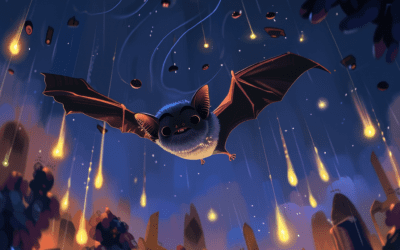Migration Patterns: Why do Birds Fly South in the Fall?
Migration patterns are fascinating natural phenomena that occur around the world. One common and intriguing example is the migration of birds, especially in the fall. Have you ever wondered why birds fly south when the seasons change? Let’s explore the reasons behind this remarkable behavior.
The Instinct to Survive
Migratory journeys are primarily driven by the instinct to survive. As temperatures drop and food sources diminish, birds need to seek out more favorable conditions to ensure their survival. Flying long distances to warmer regions with abundant food resources is essential for their well-being.
Seasonal Changes and Resources
Temperature and food availability play crucial roles in birds’ migratory behavior. In the fall, as days become shorter and temperatures decrease, the insect population decreases as well. Many bird species rely on insects as a primary food source. By flying south, birds can find a more plentiful supply of insects, berries, seeds, and other food sources.
Follow the Food
Migrating birds are also influenced by shifts in the availability of food sources. By flying south, they can follow the natural patterns of plants and animals that signal the presence of food. For example, certain fruit-bearing trees and shrubs may only produce their fruits in warmer climates during the autumn months. Birds make use of these predictable food sources by migrating to the areas where these plants thrive.
Conserve Energy and Suitable Habitats
Migrating south also allows birds to conserve energy and find suitable habitats for raising their young. The long-distance flight requires significant physical exertion and consumes a large amount of energy. By flying to warmer regions, birds can conserve energy by reducing the need to maintain body temperature in cold weather.
Additionally, the new habitats in the south offer better conditions for breeding and nesting. Birds can find suitable mates, establish territories, and build nests in areas where competition for resources may be lower than in their breeding grounds.
Navigation and Orientation
How do birds navigate over long distances without getting lost? They employ a combination of sensory abilities, including celestial cues, landmarks, magnetic fields, and even the position of the sun and stars. These natural compasses help birds stay on course during their migration journeys.
Preparation and Timing
Preparation plays a vital role in successful migration. Birds need to accumulate enough energy reserves to sustain their long flights. They often undergo physiological changes, such as increasing their body fat stores, to ensure they have enough energy for the journey.
Timing is also critical for migratory birds. They rely on innate cues and environmental signals, such as changes in day length, to determine the optimal time to embark on their migration. If they leave too early, they may encounter unfavorable conditions along the way, such as extreme weather or lack of food. On the other hand, leaving too late could result in missing out on valuable resources or safe breeding grounds.
Adaptations and Variations
Not all birds migrate in the same way or to the same extent. Some species, known as full migrants, travel long distances from their breeding grounds to their wintering grounds. Others, known as partial migrants, exhibit a mix of migratory and sedentary behaviors, with some individuals staying behind while others migrate.
Furthermore, birds have adapted to different migration strategies based on their physiological, ecological, and evolutionary characteristics. They may vary in the distance traveled, the route taken, the duration of migration, and the stopover locations.
Conclusion
Migration patterns are amazing natural phenomena driven by birds’ instinct to survive and adapt to changing environmental conditions. The onset of fall triggers a remarkable journey for these winged creatures, leading them southward in search of food, suitable habitats, and optimal breeding conditions. Witnessing the spectacle of bird migration reminds us of the wonders of the natural world and the incredible journeys undertaken by these fascinating avian travelers.












